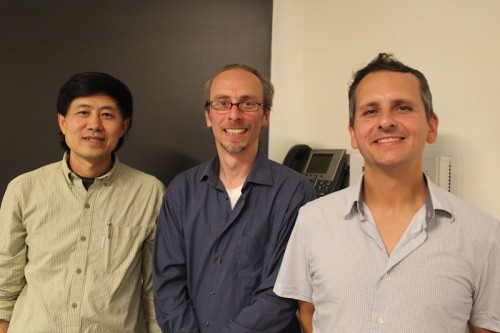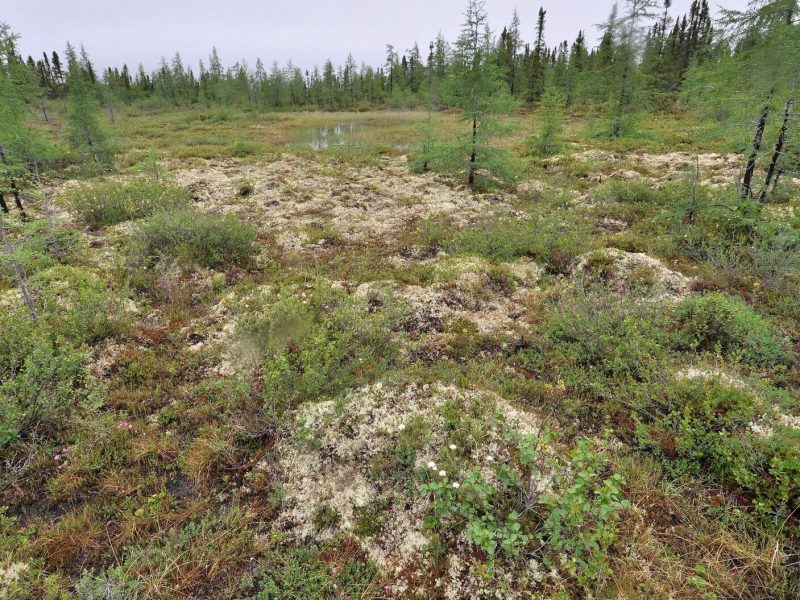Phil Camill Joins Experts to Underscore Peatlands' Critical Role in Climate Change
By Rebecca GoldfineIn a new high-profile paper in Nature Climate Change, Bowdoin's Phil Camill and sixty-nine other scientists highlight peatlands' impact on climate change and the importance of preserving these habitats.

Their paper, "Expert assessment of future vulnerability of the global peatland carbon sink," synthesizes troves of data collected by scientists over the last few years, including from Camill. Based on this meta-analysis, the paper's authors point to some worrisome trends.
Although peatlands only account for 3 percent of the global land area, they currently store more carbon than the world's forests. Waterlogged and low on oxygen, peatlands slow the process of plant decomposition, so that layers of dead plants—which retain carbon from the atmosphere—accumulate over time. Over the past several thousand years, peatlands have acted as a cooling agent on a global scale.
Yet the new study finds that peatlands could shift from being a carbon sink to a carbon source, contributing to and speeding up climate warming, Camill explained. Indeed, peatlands might already be in the midst of this reversal.
By 2100, the scientists estimate that peatlands could release a cumulative 100 billion tons (Gt) of carbon to the atmosphere, but caution that the range of uncertainty is large (from an uptake of 103 Gt to a release of 360 Gt). That amounts to a carbon release of about 1.25 Gt per year, or roughly 14 percent of the 9 Gt emitted each year from fossil fuels.
Because of the large magnitude and uncertainty in carbon release, the authors are calling for better integration of peatlands into Earth System Models, which track and predict the progression of climate change based on different factors and feedback loops. Without the potential release of peatland carbon included, these models would likely underestimate the magnitude and rate of warming.
"These models are huge and complicated," said Camill. "Typically, it takes years for the modelers to add a new driver that impacts the global carbon cycle, so they are careful and deliberate about only adding things that matter."

Modelers are recognizing that factors like peatlands and permafrost thaw will likely have significant impacts on the global carbon cycle due to climate warming and human disturbance.
Not only would including peatlands into global carbon-flux models lead to more accurate climate projections, it could also spur "the development of incentives such as peatland carbon pricing and sustainable practices and change the way these ecosystems are valued and managed," said one of the paper's lead authors, Texas A&M geography professor Julie Loisel.
The scientists note that peatlands are particularly vulnerable to human impacts. Melting permafrost, rising temperatures, drought, and sea level rise can cause peatlands to emit carbon. Wildfires, which have recently devastated large swaths of peatland in Russia and Indonesia, can release as much carbon in a few months as total human-caused carbon dioxide emissions in a year. Land use changes, like ditching and draining peatlands for farmland, or slashing and burning them, can also produce carbon while making them more susceptible to fires going forward.
A global effort
Making the case for the addition of peatlands into Earth System Models has been a nearly three-year effort by many scientists from around the world.
"This plan was developed at a three-day workshop in 2018 at Texas A&M," Camill said. "We brainstormed putting together this paper because we thought that, by bringing together this group, we could pull together the world’s expertise on this issue."
Contributions have come from a great number of studies in different geographies, including tropical, Arctic, and boreal peatlands, as well as across several areas of focus, including sea level rise, permafrost thaw, fire, climate warming, and land-use change. Camill contributed perspectives from his work on fire, permafrost thaw and carbon accumulation.
While the global peatland carbon balance is beginning to tip toward being more of a source to the atmosphere, changes vary across regions. Camill has lately been investigating the "greening effect" in high-Arctic peatlands as climate warms. In high latitudes, rising temperatures, more carbon dioxide available in the air, and increased rainfall will turn polar deserts green as vegetation growth is stimulated through 2300. And more plant growth means more carbon will be pulled out of the atmosphere.
"The Arctic will be greener," Camill said, before adding a caveat to this scenario. "But the browning effect (carbon loss) in boreal and tropical peatlands will overpower that. Those regions are either already carbon sources because of land use change and fire, or they'll flip to become carbon sources because of greater decomposition and fire with additional warming. By 2100, we think the net carbon balance of peatlands worldwide will be a source."



